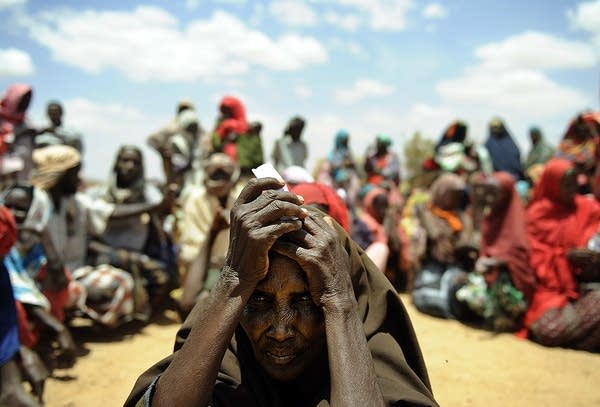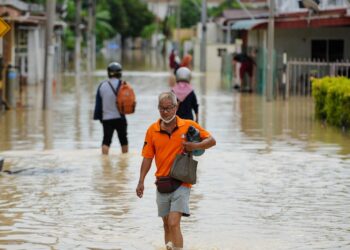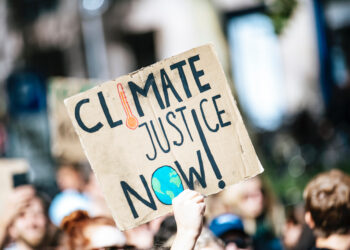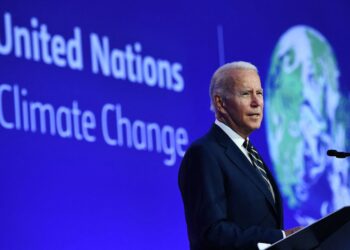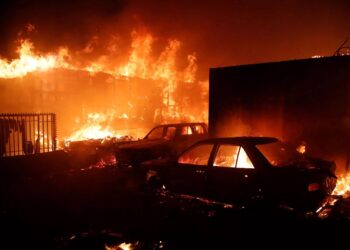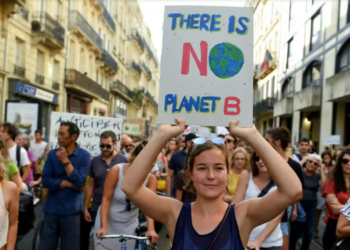Nearly 13 million people are facing severe hunger in the Horn of Africa, with almost half of those being children, and experts say as climate change accelerates, the situation is only going to get worse.
Ethiopia, Somalia, and Kenya are currently facing critical food shortages after a series of failed rains, and nearly two million people have already been displaced as a result of the drought, according to Save the Children, an organization working in the region.
Although the situation is not yet worse than the height of the 2016-17 drought, experts anticipate the number of those who are food insecure in the region to increase in the coming months.
Somalia has already experienced a 36 percent increase in those who are food insecure than this time last year.
“While national governments are working hard to respond to the needs, we fear the situation will only get worse in coming months, with the upcoming El Nino weather event likely resulting in another massive spike in the number of malnourished children,” said Ian Vale, Save the Children’s Regional Director in East and Southern Africa, in a press release.
Impacts of Climate Change
The Horn of Africa has long been dealing with droughts and food shortages, but recently, as global temperatures rise, the region has been experiencing more extreme weather.
“The climate in much of Africa in general, but particularly parts of the Horn and the Sahel has changed fairly dramatically. Temperatures have increased, and that’s problematic because temperatures in much of this region were pretty high to begin with, so even small increases would have been troublesome,” said Peter Schwartzstein, a fellow at the Center for Climate and Security.
With children in #Somalia facing yet another hunger crisis, we welcome the @USAID announcement of $185 million for humanitarian assistance & urge other donors to join efforts to scale up the drought response in the Horn of Africa. pic.twitter.com/0orWs54XWw
— Save the Children US (@SavetheChildren) June 21, 2019
However, it is not only droughts that are affecting the area. As the climate changes, the region has been experiencing less predictable weather patterns and more extreme weather events, such as heavy rains and flooding.
Recently, nearly half a million people in Somalia were affected by flooding, causing widespread damage to infrastructure and crops, which will exacerbate the food shortage.
“At the moment the Horn of Africa is kind of simultaneously in parts experiencing drought and also deadly and debilitating widespread flooding,” said Schwartzstein to The Globe Post.
When extreme weather events take place, children are the most at risk, said Diana Oberoi, a spokesperson for Save the Children, told The Globe Post.
During flooding and droughts, infrastructure key to children’s well-being such as schools and hospitals are often closed or destroyed. Also, families frequently lose their source of income, pushing some children to beg for food and money as well as taking hazardous jobs to support their families, she said.
This puts children in situations where they are potentially exposed to violence, exploitation, and abuse.
International Response
The Horn of Africa is disproportionately affected by climate change, despite not being a key contributor to greenhouse gas emissions and they are feeling the impacts before many other parts of the world, with few protections in place to fight it.
“The impact of climate change on the lives of Ethiopians, Kenyans, and Somalis is becoming more intense every year. We cannot expect children and their families in this poverty-stricken region to bear the impact of the climate crisis. This is a global issue, and we have a global responsibility to support the most vulnerable,” said Vale.
Save the Children and other aid organizations working in the region have repeatedly called for additional funding from governments, but their calls have gone mostly unanswered.
Vale said the region needs an additional $100 million to adequately address people’s hunger and healthcare needs, and to prepare for future climate change impacts.
Currently, the region is underprepared for the increase in extreme weather events, and local governments lack the resources to implement climate protections, due to many factors such as political instability, conflict, and economic troubles, said Schwartzstein.
“One of the problems is that many of the parts of the world that are most at risk from climate change are also least well equipped to even attempt to tackle it,” he said.
“Many of these countries also lack the funding, the resources, in some instances, the expertise to climate-proof themselves to the extent that perhaps they ought to. So that’s one of the great tragedies, which is that climate change is striking those that are least equipped to combat it.”
A recent joint study by Unicef, The World Food Program, and the Food and Agricultural Organizations of the United Nations found that for every $1 spent in preventative action would save $9 in response spending.
“Governments must increase funding for sustained humanitarian assistance and long-term solutions to avert a catastrophe and address the cyclical drought impacts,” said Oberoi.


